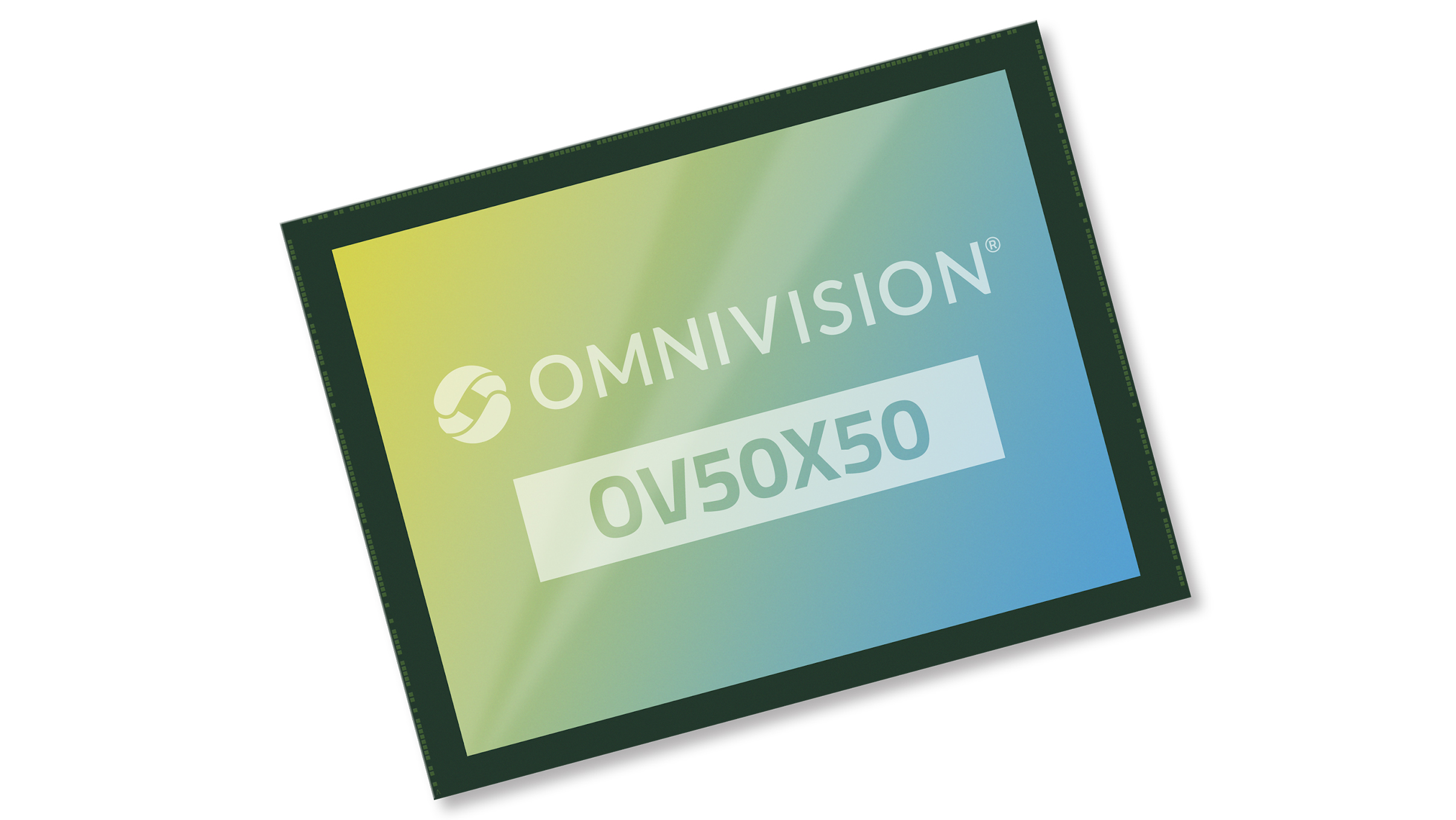Digital Camera World Verdict
The Benro GX35 combines great build quality with some really useful features that make the head easier to use, more secure and more versatile. Its combined locking and friction control also enables a high level of control while locking tight to avoid the dreaded drooping. It’s well worth getting used to the slightly unusual design and awkward plate mount.
Pros
- +
Clever safety mechanism
- +
Large friction/lock control
- +
Dual pan system
Cons
- -
Fiddly plate mount
- -
Bubble level hidden in use
- -
Some prefer a separate friction control
Why you can trust Digital Camera World
The GX35 is the largest of Benro’s GX series of low profile ball heads. While the GX 25 and GX30 can handle maximum payloads of 25Kg and 30Kg respectively, the GX35 can cope with loads of up to 35Kg. Of course, with photographic gear, it’s the distribution of the weight that tends to be the issue rather than the total weight, but a heftier head should be able to cope with bigger, longer lenses than a small one.
A large ball diameter also helps to make it easy to move a heavy camera set-up smoothly and the GX35 has a 40mm ball.
Benro makes the head from aluminum and it has an Arca-Swiss compatible clamp and quick release plate.
There are a couple of interesting features that set the Benro GX series heads aside from others in the market. Firstly, the quick release plate clamp can only be unscrewed so far before you have to pull it out to unscrew it further and release the plate. That means that your camera is unlikely to be released accidentally from the head.
There’s also a dual panning control, similar to the on the Vanguard Veo BH-160S Dual-Axis Ball Head, which is useful for shooting panoramas on uneven ground. Normally when you shoot a panorama you have to ensure that the base of tripod head is level so that the horizon stays level as the camera is panned. In theory this is simple to achieve as it’s just a case of adjusting the length and/or angle of the legs to get the head level, but in practice it always take a while. The GX35, however, has a panning mechanism immediately below the plate clamp as well as the usual one at the bottom of the head. This means that the ball can be used to get the camera level and the panning rotation can be made from above the ball.
Specifications
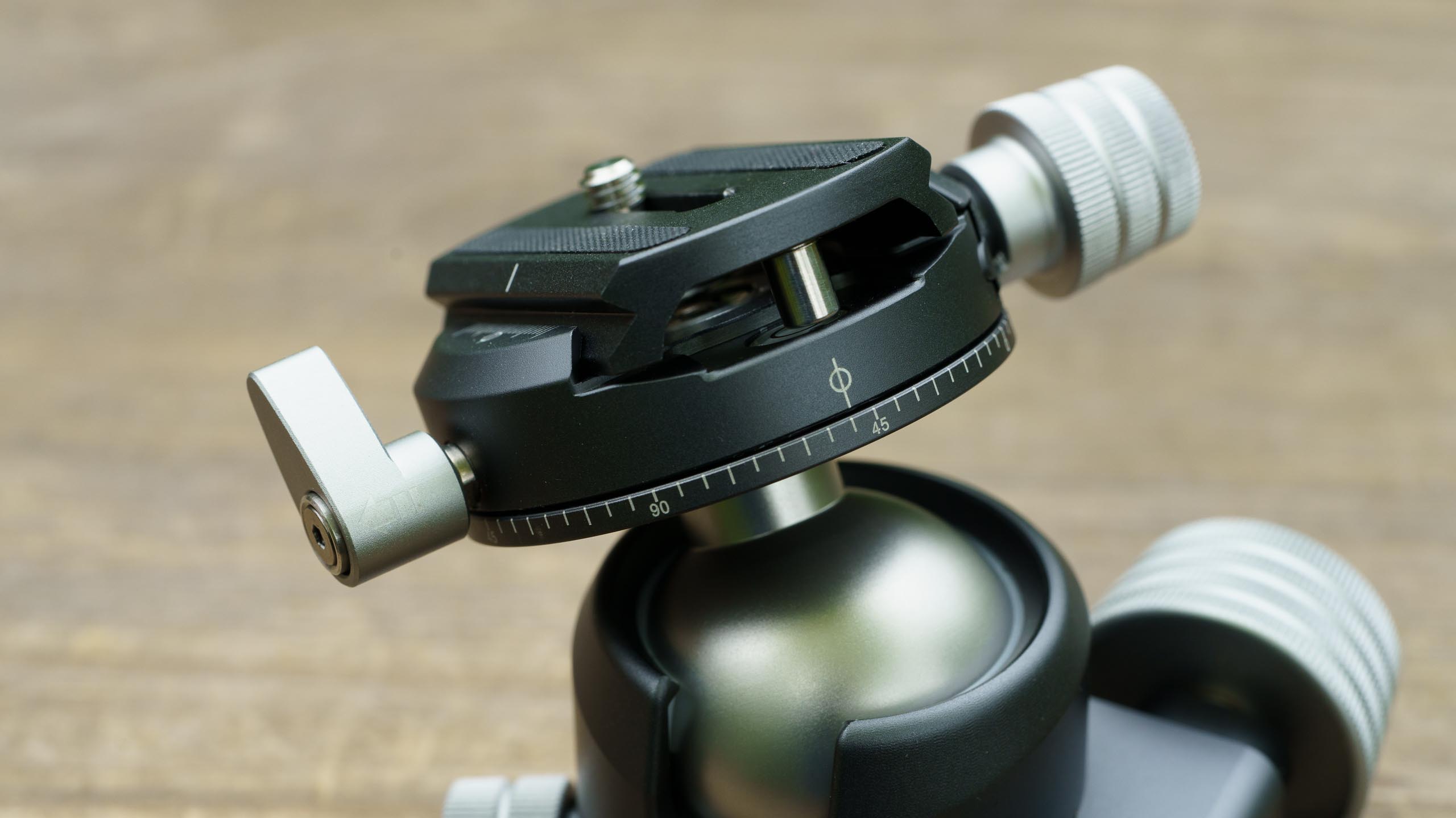
Height: 85mm
Base diameter: 51mm
Weight: 400g
Controls: Dual pan, ball lock/friction, clamp lock
Plate compatibility: Arca-Swiss
Maximum load: 35kg
Build & handling
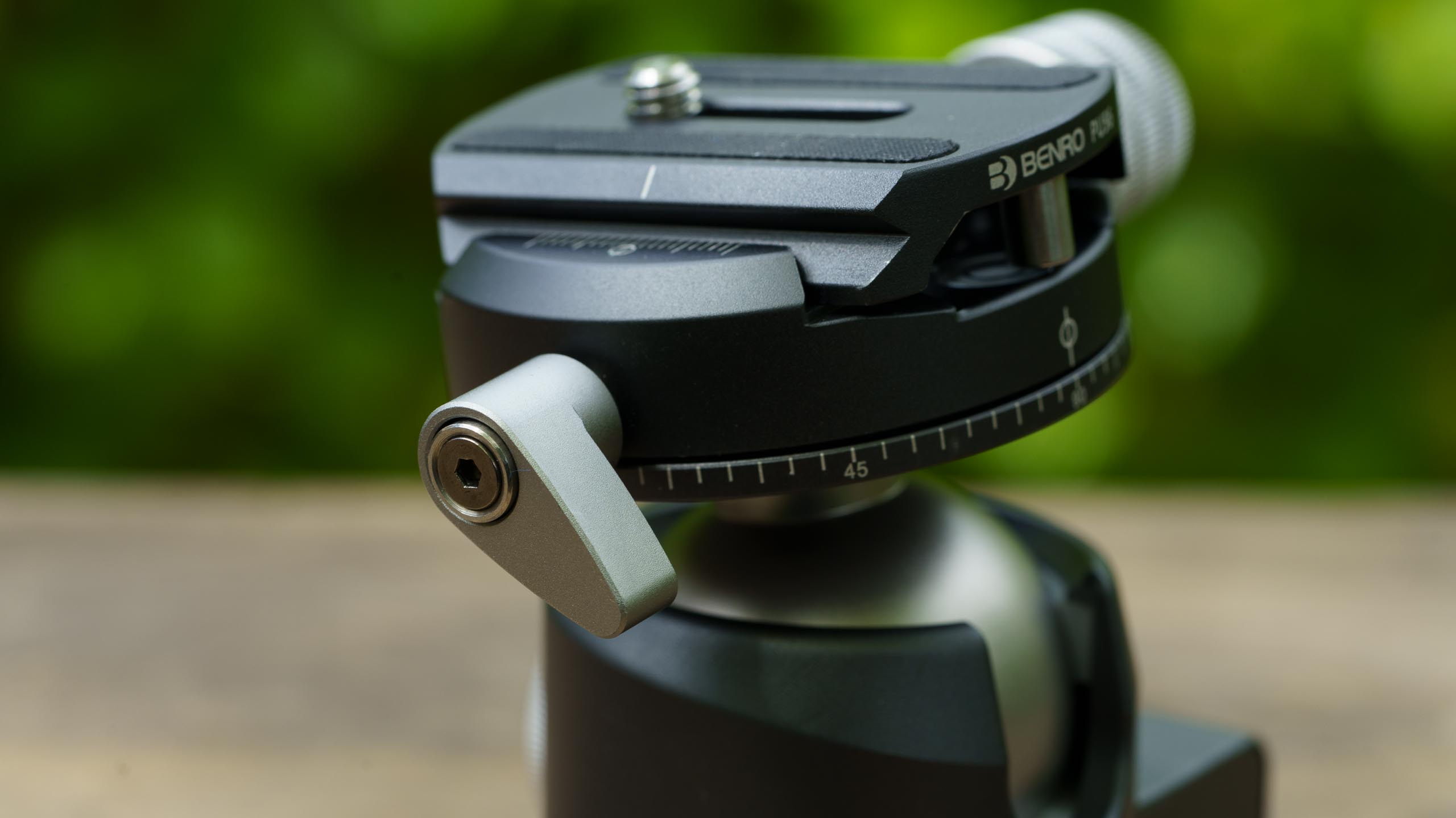
The Benro GX35 Low Profile Ballhead is quite an unusual looking ball head because the ball lock and friction control knob sticks out from a lump on the side of the main body, rather than the body itself. In addition, the quick release plate sits quite high up in the clamp.
All three of the control knobs on the GX35 are a kind of flat-topped conical shape with deep ridges that ensure a good grip. The largest knob is the ball release and friction control and it affords plenty of control over the ball movement. It means that this is not one of those heads that slips easily from too loose to locked tight and back with a nano-twist.
Lower down, a smaller knob allows you to lock or release the standard panning mechanism while the upper one is control by a thumb release. Should you need to, this can be pulled out and moved a more convenient location if you find it at an awkward angle to operate.
The plate clamp knob sits on the opposite side of the head from the upper panning release. When the plate is clamped, it’s released by rotating the knob through a little over 180° where there’s a stop and the knob has to be pulled out before it can be rotated further to allow the plate to be removed from the head. It’s a clever locking mechanism that avoids the need for an extra latch, button or lever.
Performance
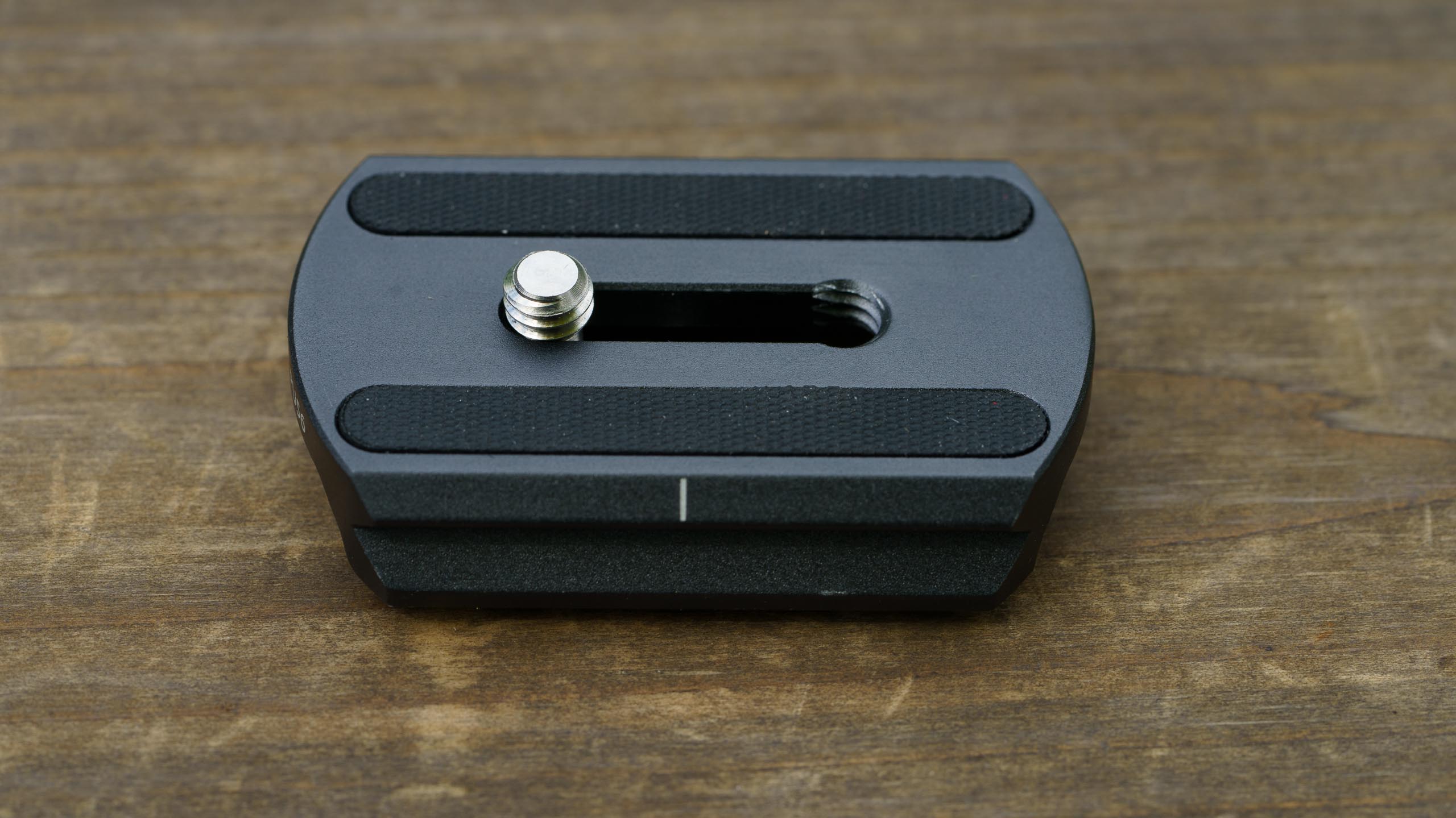
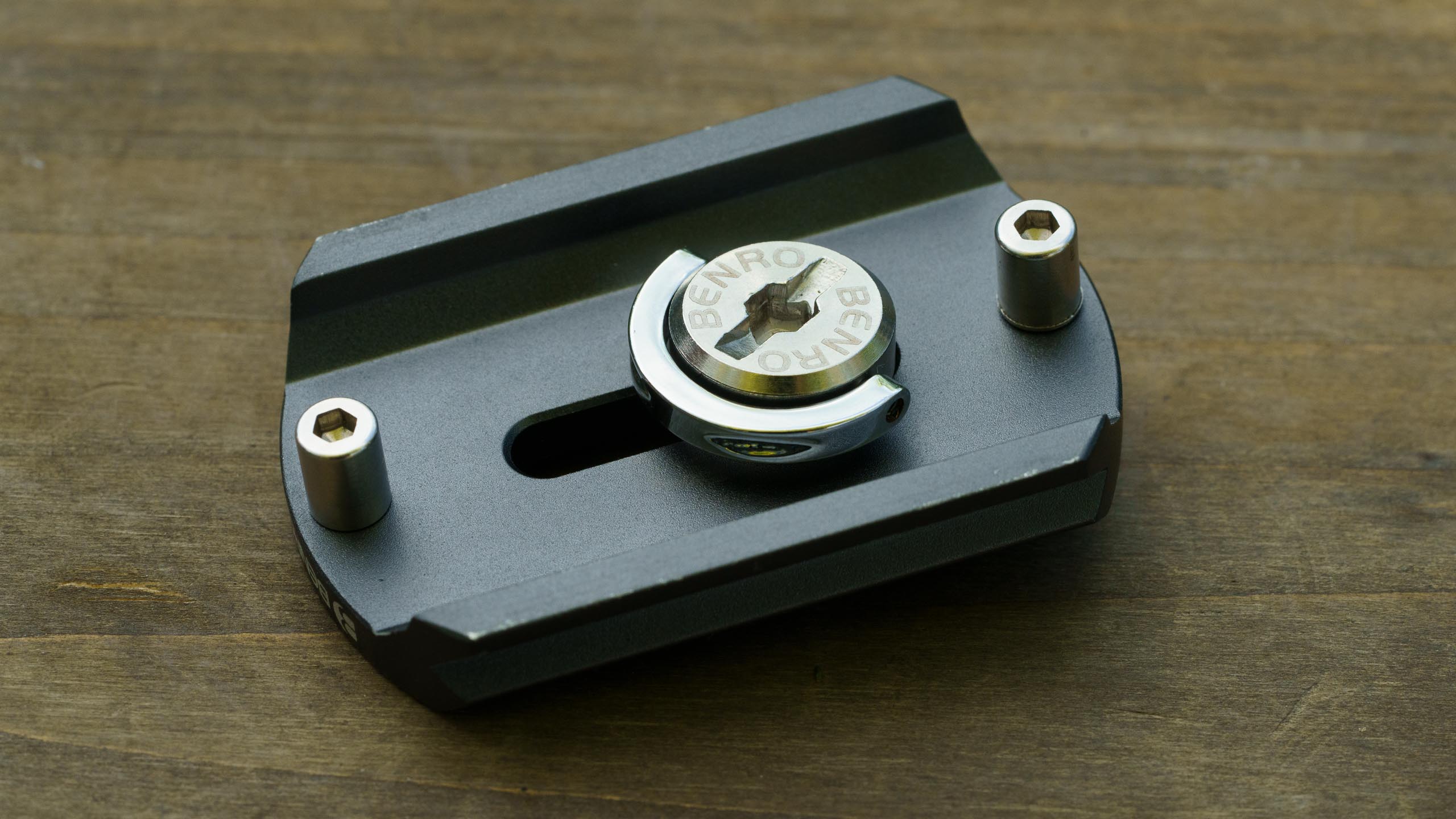
The GX35’s quick release plate bolt has a coin slot, hex socket and a flip-out D-ring, so there are plenty of options for fastening it. However, it’s best to use the D-ring to get it finger-tight and then switch to using the supplied Allen key to tighten it properly.
I found the plate a bit fiddly to get into the clamp as it sometimes catches on the front edge, but once it’s in and the clamp is fully closed, it feels very secure.
With the 1.57kg Nikkor AF-S 80-400mm F4.5-5.6 G ED VR mounted on the 765g Nikon D7100 and attached to the GX35 via the lens’ collar, I found it easy to get the composition I wanted and to lock everything in place. As the camera and lenses are well-balanced there’s virtually no drooping when I let go of the camera after tightening the head ball lock.
Switching to a less well-balanced set-up with the quick release plate on the camera causes some sagging after I stopped supporting the lens, but as I’ve found with other tripod head’s, this is the result of movement between the release plate and the camera. A more robust camera gives a more secure mount, but everything plays a part, the tightness of the plate on the head, the head and the tripod itself.
Verdict
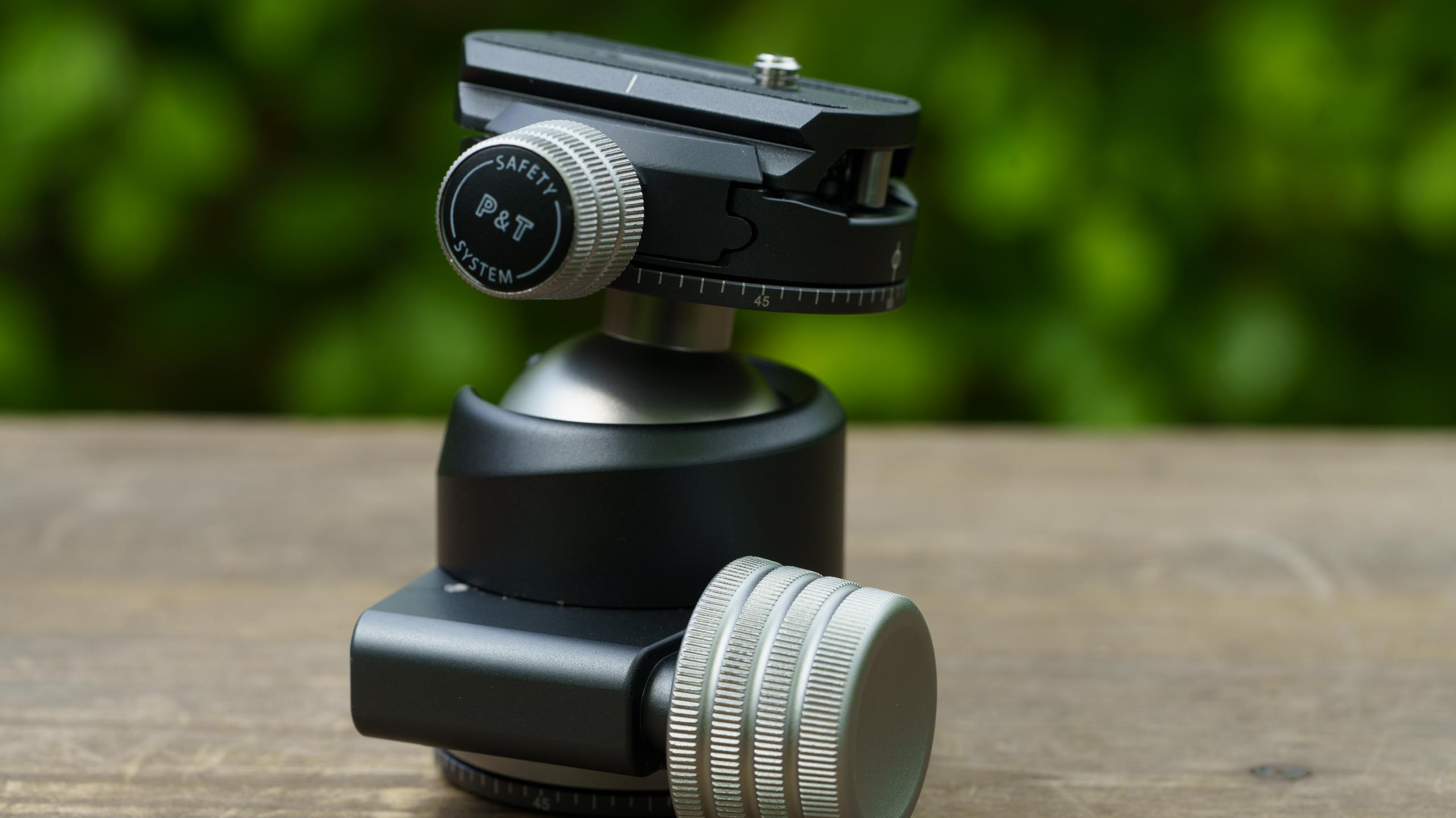
While the release plate is a bit awkward to mount in the head, the Benro GX35 Low Profile Ballhead is a very well-made tripod head that can cope with heavy cameras and lenses.
Although the release plate is a bit fiddly to fit in the clamp, the head holds it securely and the safety mechanism for the release is ingenious. The second panning mechanism is also a brilliant addition that solves a common problem remarkably easily, making the head a great choice for anyone who likes shooting panoramas.
Angela has been testing camera gear from all the major manufacturers since January 2004 and has been Amateur Photographer’s Technical Editor and Head of Testing for Future Publishing’s photography portfolio (Digital Camera Magazine, PhotoPlus: The Canon Magazine, N-Photo, Practical Photoshop, Photography Week and Professional Photography magazines, as well as the Digital Camera World and TechRadar websites). She is the founder of SheClicks - a community group that encourages and supports female photographers.


